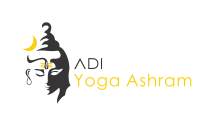Best Yoga Asanas For Back Pain Relief
If you’re grappling with persistent back pain, incorporating yoga into your daily routine could provide the relief you seek. Yoga, a holistic mind-body practice, is widely recognized for its therapeutic benefits in alleviating back discomfort and the associated stress.
Engaging in specific yoga poses can promote relaxation and enhance the strength and flexibility of your body, offering both short-term relief and long-term benefits.
Even just a few minutes of daily yoga practice can cultivate a heightened awareness of your body. This increased awareness enables you to pinpoint areas of tension and identify any muscular imbalances that may be contributing to your back pain. Armed with this knowledge, you can take proactive steps to restore balance and alignment within your body.
Some common causes of Back Pain
Understanding the underlying causes of back pain is crucial for effective management and treatment. Back pain can arise from a variety of factors, both physical and lifestyle-related. Lets cover some of them.
Muscle Strain: One of the most common causes of back pain is muscle strain or sprain due to sudden movements, lifting heavy objects incorrectly, or poor posture over time. This can lead to muscle spasms and discomfort.
Poor Posture: Sitting or standing for prolonged periods with improper posture can strain the muscles and ligaments in the back, leading to pain and stiffness.
Inactivity: Lack of physical activity and prolonged sitting can weaken the muscles that support the spine, increasing the risk of developing back pain.
Age-related Changes: As we age, our spine undergoes natural degenerative changes such as herniated discs, spinal stenosis, or osteoarthritis, which can result in back pain.
Excess Weight: Carrying excess weight puts added stress on the spine and can lead to back pain, especially in the lower back.
Poor Body Mechanics: Incorrect lifting techniques, repetitive motions, or sudden movements can strain the back muscles and cause pain.
Stress and Emotional Factors: Emotional stress can manifest physically, leading to muscle tension and exacerbating existing back pain.
By understanding these common causes of back pain can help you tailor a yoga practice that addresses specific areas of weakness or tension, promoting relief and preventing future discomfort.
How Yoga Postures Work for Back Pain
Yoga offers a targeted approach to addressing back pain, particularly focusing on strengthening and supporting the muscles crucial for spinal health. For individuals experiencing low back pain, yoga can be particularly beneficial in engaging key muscle groups such as the paraspinal muscles responsible for spinal flexibility, the multifidus muscles that stabilize the vertebrae, and the transverse abdominis located in the abdomen, which aids in stabilizing the spine.
The practice of yoga extends beyond mere physical exercise, offering holistic benefits that contribute to emotional well-being. Through deliberate, slow movements and a heightened emphasis on proper breathing techniques, yoga can effectively reduce stress levels and mitigate feelings of anxiety and depression associated with chronic back discomfort.
By incorporating yoga postures into a comprehensive treatment plan, individuals can actively engage in self-care and promote overall wellness. The combination of strengthening muscles, improving flexibility, and cultivating mindfulness through yoga can significantly contribute to the management and potential alleviation of back pain, enhancing both physical function and emotional resilience.
10 Yoga Poses you must add to your routine for a pain-free back
- Cat-Cow Pose (Marjaryasana-Bitilasana) :
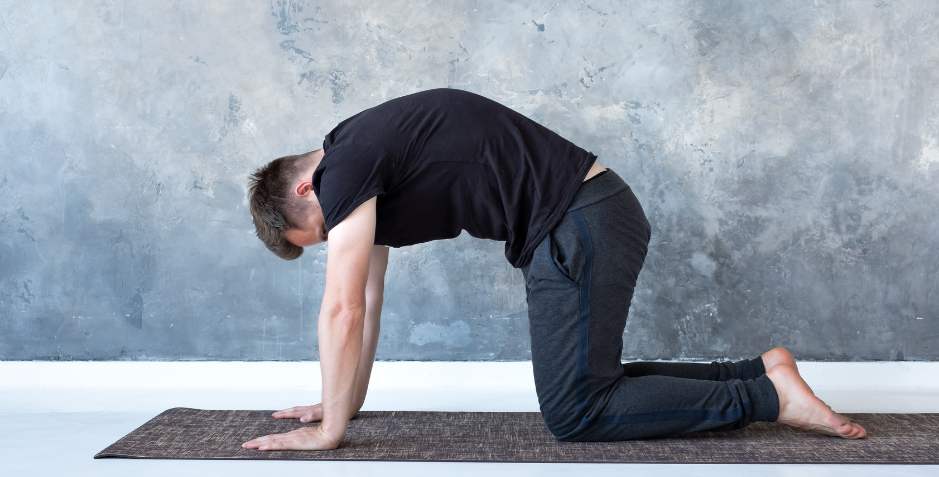
- Start on your hands and knees in a tabletop position.
- Inhale, arch your back and lift your tailbone and head (Cow Pose).
- Exhale, round your spine, tuck your tailbone and drop your head (Cat Pose).
- Repeat this flow several times.
Targeted Muscles
- Spinal erectors (erector spine)
- Abdominals
2. Cobra Pose (Bhujangasana):
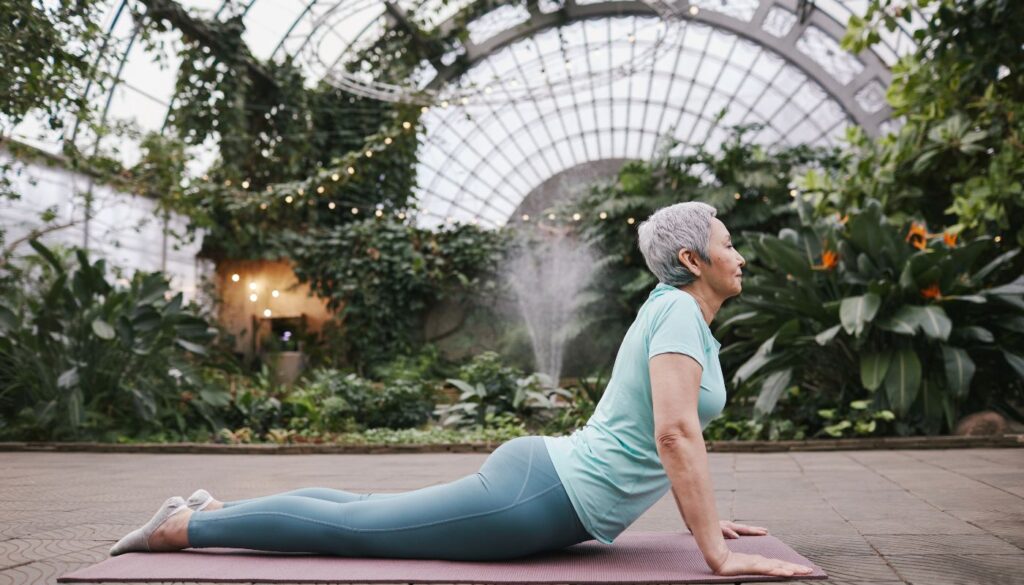
- Lie on your stomach, legs extended, palms under your shoulders.
- Inhale, press your palms into the mat, and lift your chest off the floor while keeping your pelvis grounded.
- Engage your back muscles and hold for a few breaths, then exhale and release.
Targeted Muscles
- Rectus abdominis
- External obliques
- Spinal erectors
- Multifidus
- Psoas major
3. Bridge Pose (Setu Bandhasana):

- Lie on your back, bend your knees, and place your feet hip-width apart.
- Inhale, lift your hips towards the ceiling, pressing into your feet and shoulders.
- Keep your thighs parallel and hold for a few breaths, then slowly lower down.
Targeted Muscles
- Gluteus maximus
- Hamstrings
- Erector spinae
- Rectus abdominis
4. Thread the Needle Pose:

- Begin on your hands and knees in a tabletop position.
- Slide your right arm under your left arm, lowering your right shoulder and temple to the mat.
- Hold and breathe deeply, feeling a stretch in your upper back and shoulders.
- Repeat on the other side.
Targeted Muscles
- Rhomboids
- Trapezius
- Latissimus dorsi
- External obliques
5. Seated Forward Bend (Paschimottanasana):

- Sit on the mat with your legs extended in front of you.
- Inhale, lengthen your spine, then exhale and hinge forward from your hips, reaching towards your feet.
- Hold onto your legs, ankles, or feet—whatever is comfortable—and breathe deeply into the stretch.
Targeted Muscles
- Hamstrings
- Erector spinae
- Gluteus maximus
- Gastrocnemius
6. Supine Twist (Supta Matsyendrasana):

- Lie on your back with your arms extended to the sides.
- Bend your knees, shift them to the right, and then drop them to the left while turning your head to the right.
- Hold for a few breaths, feeling a gentle twist in your spine and lower back.
- Repeat on the other side.
Targeted Muscles
- Internal and external obliques
- Rectus abdominis
- Quadratus lumborum
7. Locust Pose (Salabhasana):
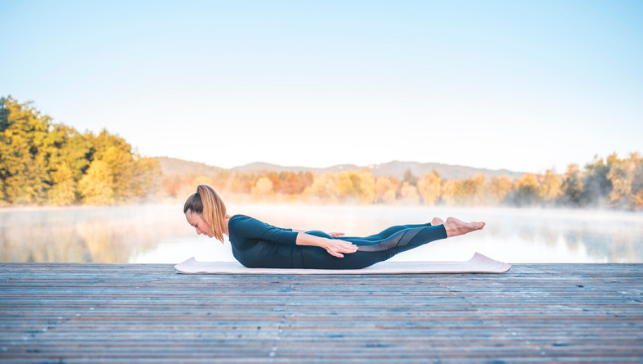
- Lie on your stomach, legs extended, arms by your sides.
- Inhale, lift your chest, arms, and legs off the mat, engaging your back muscles.
- Hold for a few breaths, then exhale and release back down.
Targeted Muscles
- Spinal erectors
- Gluteus maximus
- Hamstrings
- Trapezius
- Rhomboids
8. Triangle Pose (Trikonasana):
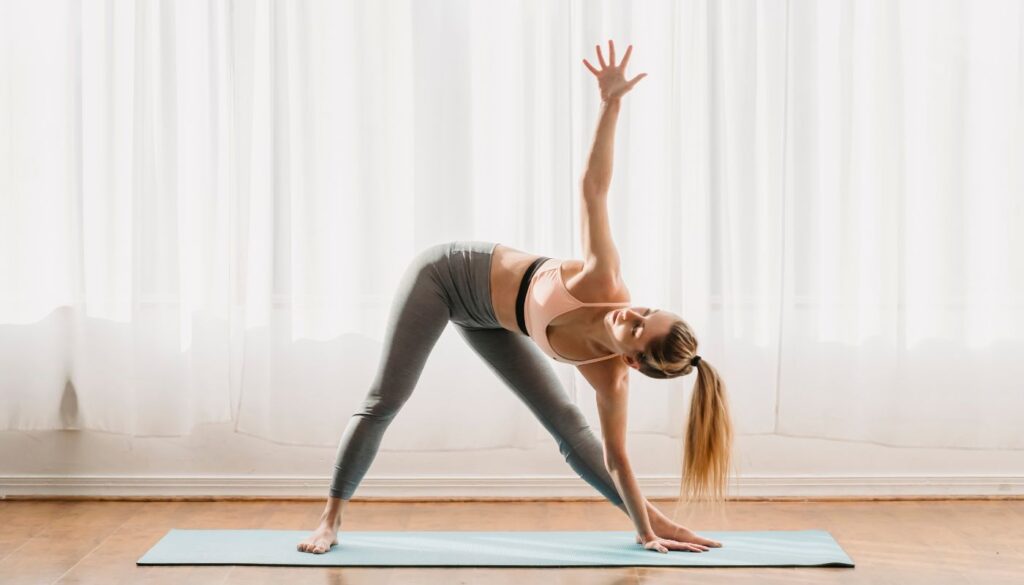
- Stand with your feet wide apart, toes pointing forward.
- Extend your arms parallel to the floor.
- Shift your left foot slightly in, turn your right foot out, and reach towards your right foot with your right hand.
- Lower your right hand to your shin, ankle, or the floor while reaching your left hand towards the ceiling.
- Keep your chest open and gaze up, feeling a stretch along your side body.
- Hold for a few breaths, then switch sides.
Targeted Muscles
- Quadriceps
- Adductor Magnus
- Gluteus
- Tensor Fasciae Latae
- External Obliques and Internal Obliques
- Rectus Abdominis
- Erector Spinae
- Latissimus Dorsi
9. Child’s Pose (Balasana):
- Kneel on the mat, toes together, knees apart.
- Sit back on your heels and extend your arms forward, lowering your forehead to the mat.
- Hold for several breaths, focusing on relaxing the lower back.
Targeted Muscles
- Latissimus dorsi
- Trapezius
- Erector spinae
- Gluteus Maximus
10. Downward-Facing Dog (Adho Mukha Svanasana):

- Start in a plank position, then lift your hips upward, forming an inverted “V” shape.
- Press your palms into the mat, lengthen your spine, and push your heels towards the floor.
- Hold for a few breaths, feeling the stretch along your spine and hamstrings.
Join yoga teacher training in rishikesh
Targeted Muscles
- Latissimus dorsi
- Hamstrings (biceps femoris, semitendinosus, semimembranosus)
- Gastrocnemius (calf muscles)
- Erector spinae
Learn to know more yoga poses for back pain relief so you can join 100 hour yoga teacher training and 200 hour yoga teacher training and 300 hour yoga teacher training
